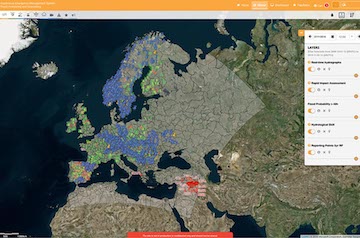Verification December 2018-January 2019
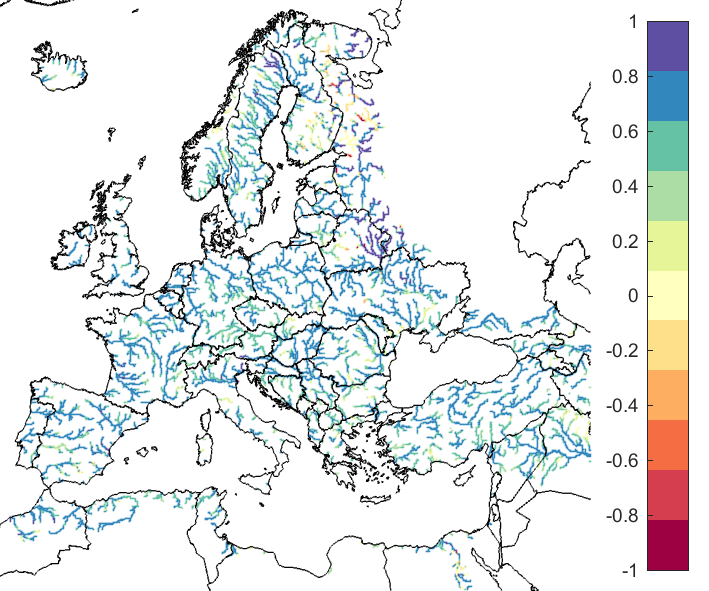
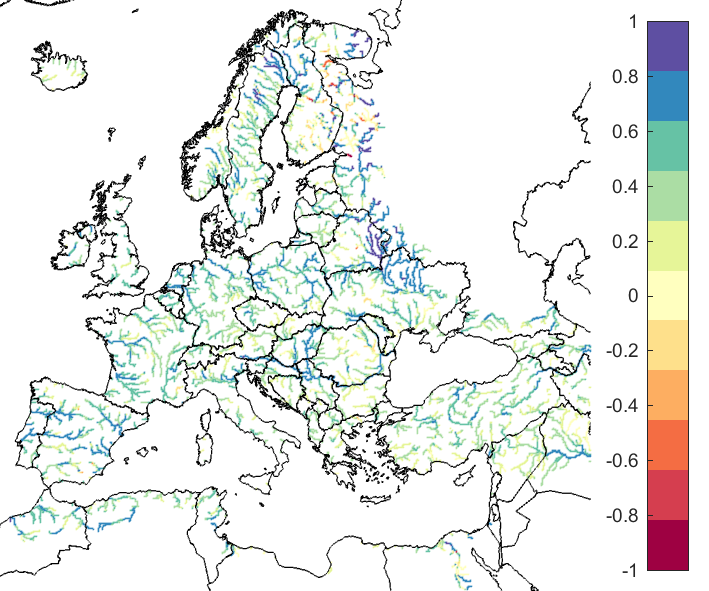
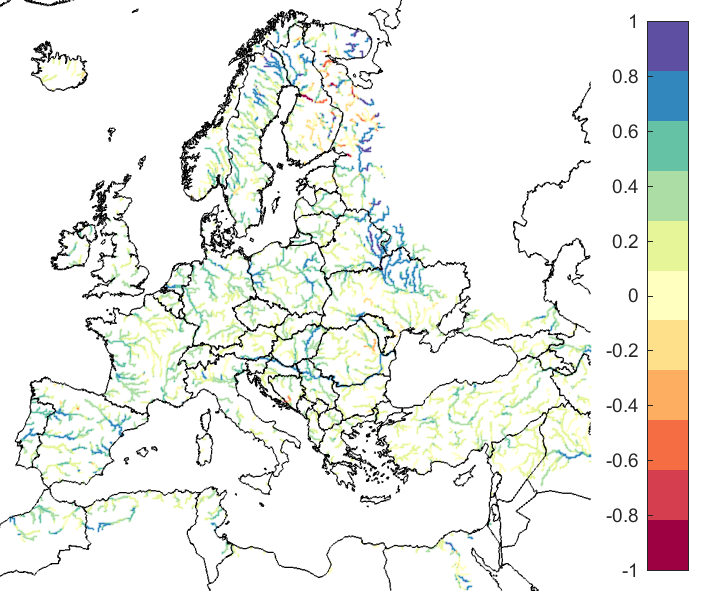
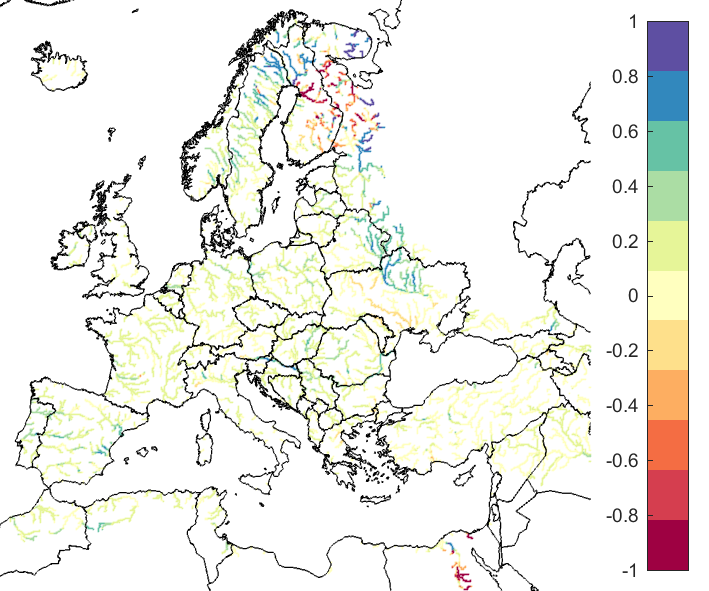
Figures 1-4 shows the EFAS headline score, the Continuous Ranked Probability Skill Score (CRPSS) for lead times 1, 3, 5 and 10 days for the December to January period across the EFAS domain for catchments larger than 2000km2. A CRPSS of 1 indicates perfect skill, 0 indicates that the performance is equal to that of the reference, and any value <0 (shown in orange-red on the maps) indicates the skill is worse than the reference. The reference score is using yesterday’s forecast as today’s forecast, which is slightly different than we used previously and very difficult to beat.
These maps indicate that across much of Europe for forecasts are more skilful than persistence at both lead times. Regions shown in blue are those where EFAS forecasts are more skilful than persistence, with darker shading indicating better performance. The skill during the winter months were highest in the north- and north-eastern part of Europe. This is to be expected as the river discharges this time of year are quite low, and this is to predict than high-flows.
